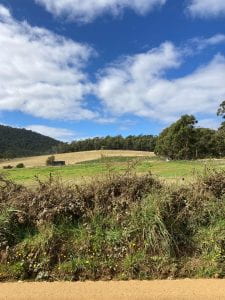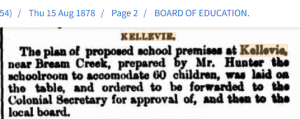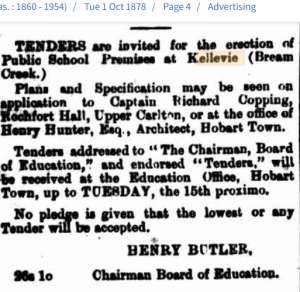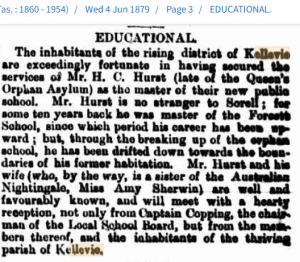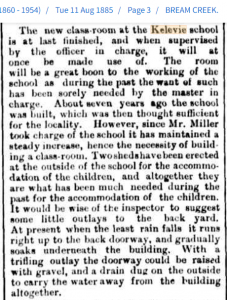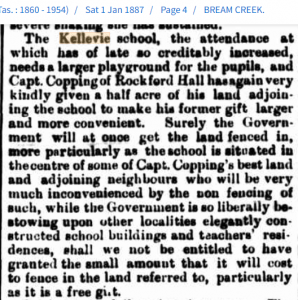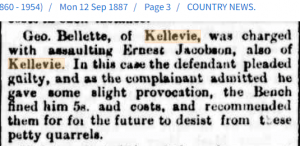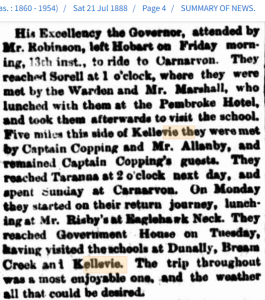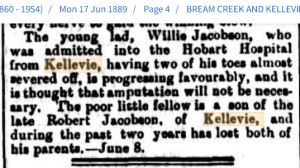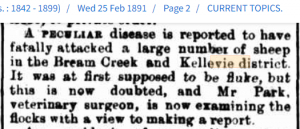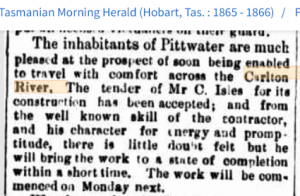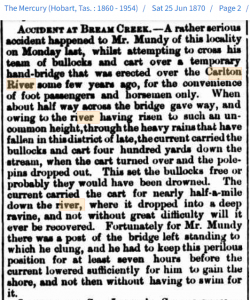Many places in Tasmania are named after English towns, rivers and mountains. But let’s look at Sorell municipality to find out how places were named. I have used a few sources:
- Pretyman Index – found in Libraries Tasmania – can search online by clicking my link
- Where in Tasmania? A compilation of place names and their histories in Tasmania – in two parts A-K and L-Z
- Tasplaces : over 16 000 Tasmanian placenames and where to find them – reference book found in many Tasmanian Libraries
- Tasmanian nomenclature: the place-names of the state : record of origins and dates / compiled by ‘Nomen’. – pamphlet found in the reading room in Hobart library
- A dictionary of Tasmanian place-names 1993 – found in the reading room in Hobart library
- Australian Dictionary of Biography – found online
- Newspaper link from Trove
Towns:
- Sorell – in honour of Lieutenant Governor Sorell by Lachlan Macquarie
- Forcett – named after the home of James Gordon
- Dunalley – named by Captain Bayly (Army) after Lord Dunalley from whom he received his commission
- Dodges Ferry – named after Ralph Dodge who ran a ferry in the area
- Lewisham – named after Dr Arndell family – Norman papers
- Nugent – originally part of Carlton Scrub, then divided into Ringarooma and Weedy Hills, then Nugent
- Midway Point – formerly known as Middle Point
- Orielton – Edward Lord married into the Owen family who owned property at Orielton, Wales
- Copping – originally Coppington after Captain Richard Copping
Rivers/Creeks/Bays:
- Carlton River – Baudin named the place River Brue in honour of one of his officers. Matthew Flinders later mistakenly marked it as Carlton River and this named was used for the district.
- Iron Creek – known as Iron Rivulet in Meehan’s Field Books in 1803
- Bream Creek – black or silver bream caught there – mentioned in 1830 newspaper articles
- Norfolk Bay – Baudin named it Port Buache, then Flinders named it Norfolk Bay after his schooner
- Frederick Henry Bay – named Baie du Nord by D’Entrecasteaux (1792), Henshaw’s Bay by Hayes (1794) then its present name by Flinders (1798)
- Marion Bay – named in 1802 by a member of Baudin ‘s expedition in honour of the French navigator Marion du Fresne
Many of the hills or mountains are named after early settlers of the district.
Hills: Dunbabins, Heans, Pearces, Dixons, Haytons, Steeles, Lesters, Bedelphs and Allanbys
- Mt Elizabeth – after James Gordon’s wife
- Gordon Sugarloaf – probably named after James Gordon
- Ragged Tier – between Copping and Bream Creek, named for the saw tooth look of the mountains
- Wykeholm Hill – related to Anthony Wyke Steele owning property called Wykeholm
- Ephraim Ridge – Ephraim Newitt – owner of property in the area
- Wettenhall Flats – named after Lieutenant Robert Wettenhall
Readers: Do you know the origin of the following places in the municipality?
- Mother Browns Bonnet
- Kellevie
- Pickety Hill
- Spankers Hill
